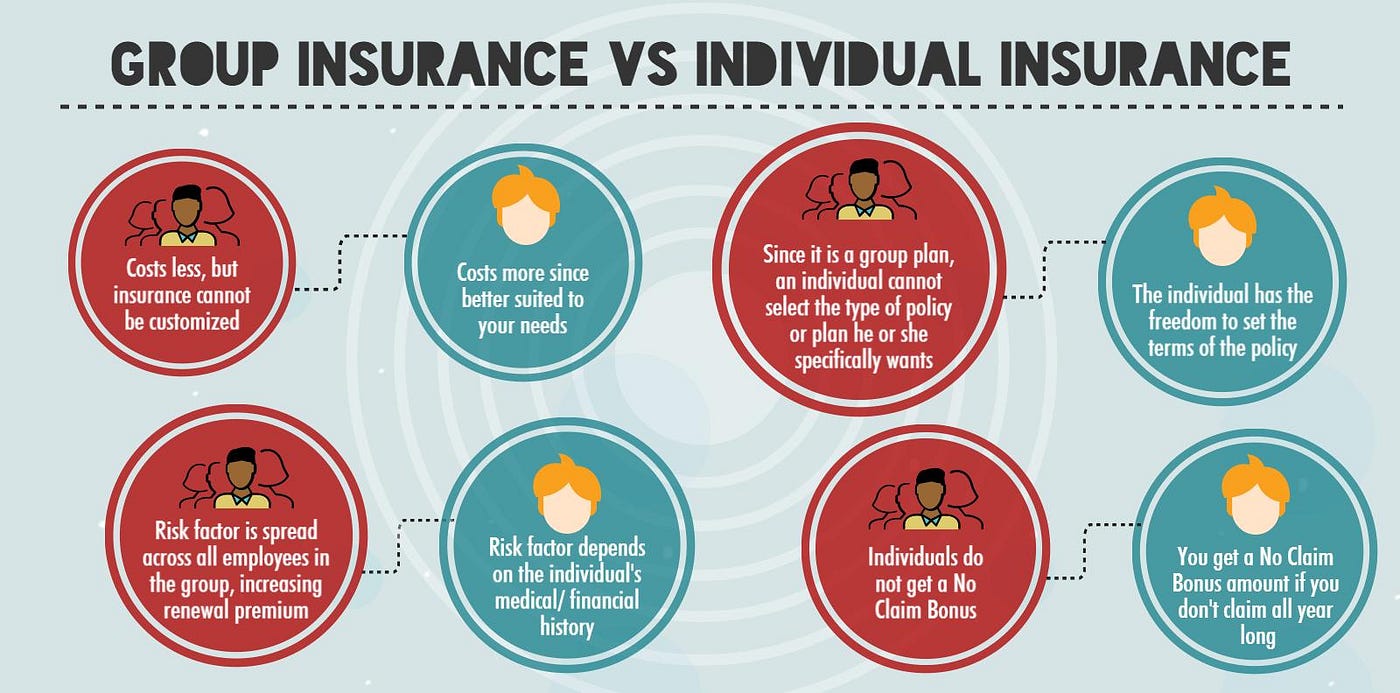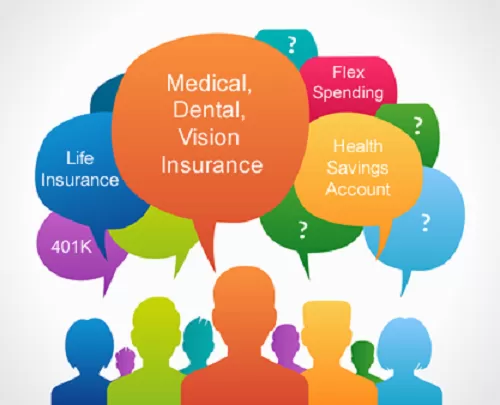Medicare Advantage Agent Things To Know Before You Get This
Medicare Advantage Agent Things To Know Before You Get This
Blog Article
See This Report about Medicare Advantage Agent
Table of ContentsAll About Medicare Advantage Agent5 Simple Techniques For Medicare Advantage AgentThe Best Guide To Medicare Advantage Agent

follows from perplexing the reasonably young age profile of the without insurance with the much better wellness, typically, of younger individuals. This obscures the link in between health and wellness condition and wellness insurance. For those without access to work environment wellness insurance, inadequate wellness is a potential obstacle to purchasing nongroup protection because such protection might be highly valued, leave out pre-existing conditions, or be just inaccessible. The variety of without insurance Americans is not specifically big and has not transformed over the last few years. 7 out of ten respondents in a country wide representative study assumed that less Americans lacked medical insurance than actually do(Fronstin, 1998). Roughly half(47 percent )thought that the number of individuals without health insurance reduced or remained consistent over the last half of the last decade(Blendon et al., 1999). This decline of nearly 2 million in the number of people 'without insurance coverage (a decrease
of around 4 percent)is absolutely a positive change. With a softer economic climate in 2000 the current reported gains in insurance protection may not continue(Fronstin, 2001 ). The decline in the variety of without insurance will certainly not proceed if the economy stays sluggish and health and wellness treatment prices continue to exceed rising cost of living. This is due to the fact that the information were accumulated for a duration of solid financial performance. Of the approximated 42 million people who were without insurance, all yet regarding 420,000(about 1 percent)were under 65 years of age, the age at which most Americans come to be eligible for Medicare; 32 million were grownups between ages 18 and 65, about 19 percent of all grownups in this age; and 10 million were youngsters under 18 years old, regarding 13.9 percent of all youngsters (Mills, 2000). These price quotes of the variety of individuals uninsured are created from the yearly March Supplement to the Present Populace Study (CPS), carried out by the Census Bureau. Unless otherwise kept in mind, nationwide quotes of people without medical insurance and percentages of the population with various kinds of insurance coverage are based upon the CPS, the most extensively utilized resource of estimates of insurance policy coverage and uninsurance rates. These surveys and the estimates they produce are explained briefly in Table B. 1 in Appendix B - Medicare Advantage Agent. These surveys differ in dimension and tasting techniques, the inquiries that are inquired about insurance
The Single Strategy To Use For Medicare Advantage Agent
coverage, and the time duration over which insurance coverage or uninsurance is gauged(Lewis et al., 1998, Fronstin, 2000a ). Still, the CPS is especially useful due to the fact that it creates yearly estimates reasonably swiftly, reporting the previous year's insurance coverage approximates each September, and because it is the basis for a constant set of quotes for even more than twenty years, enabling evaluation of patterns in coverage with time.

Not known Details About Medicare Advantage Agent
Over a three-year duration beginning early in 1993, 72 million individuals, 29 percent of the U.S. populace, were without coverage for a minimum of one month. Within a single year(1994), 53 million individuals experienced a minimum of a month without insurance coverage(Bennefield, 1998a). Six out of every 10 uninsured grownups are themselves utilized. Working does improve the possibility that one and one's family members will have insurance coverage, it is not an assurance. Also members of family members with two full time wage income earners have nearly a one-in-ten opportunity of being uninsured (9.1 percent uninsured price)(Hoffman and Pohl, 2000 ). The partnership in between health insurance and accessibility to care is well developed, as recorded later in this chapter. The partnership between wellness discover this insurance and wellness end results is neither direct neither easy, an extensive medical and wellness solutions research study literature links health and wellness insurance policy coverage
to improved access accessibility care, better quality, and improved personal individual population health wellness. The second report, on personal health end results for uninsured adults, is stood for by the inner circle of the figure, while the third record, on household well-being, includes the subjects of the 2nd record yet stresses a different unit of evaluation, particularly, the family. The 6th record in the collection will certainly offer info regarding techniques and initiatives undertaken locally, statewide, or nationally to attend to the lack of insurance coverage and its adverse impacts. Degrees of analysis for taking a look at the results of uninsurance. This conversation of health and wellness insurance protection focuses mostly on the U.S. populace under age 65 since practically all Americans 65 and older have Medicare or various other public protection.
Furthermore, it concentrates specifically on those without any kind of medical insurance for any length of time. The issues faced by the underinsured remain in some aspects similar to those faced by the uninsured, although they are typically much less extreme. Uninsurance and underinsurance, nonetheless, entail definitely various policy concerns, and the approaches for addressing them might differ. Throughout this study and the five reports to comply with, the major focus gets on individuals without any health insurance coverage and therefore no aid in paying for healthcare past what is offered via charity and safety and security web organizations. Medical insurance is a powerful element impacting receipt of care due to the fact that both people and physicians react to the out-of-pocket cost of services. Wellness insurance, however, is neither essential nor sufficient to get to clinical services. The independent and straight effect of health
insurance insurance policy protection access to health services solutions well establishedDeveloped Others will get the healthcare they need also without health and wellness insurance, by paying for it expense or seeking it from providers who use treatment complimentary or at extremely subsidized prices. For still others, medical insurance alone does not make certain receipt of treatment as a result of other nonfinancial barriers, such as a lack of health and wellness care service providers in their area, restricted accessibility to transportation, illiteracy, or linguistic and social distinctions. Formal research study regarding uninsured populations in the United States dates to the late 1920s and early 1930s when the Committee on the Expense of Healthcare created a collection of records regarding financing doctor workplace brows through and hospitalizations. This concern became salient as the numbers of clinically indigent climbed during the Great Depression. Empirical research studies consistently support the link between access to care and enhanced health end results(Bindman et al., 1995; Starfield, 1995 ). Having a regular resource of treatment can be thought about a forecaster of gain access to, as opposed to a direct procedure of it, when wellness results are themselves used as access indications. This expansion of the concept of gain access to measurement was made by the IOM Board on Checking Accessibility to Personal Health Care Provider(Millman, 1993, p. Whether moms and dads are guaranteed shows up to impact whether their youngsters get care in addition to how much careeven if the children themselves have insurance coverage(Hanson, 1998). The health of parents can influence their ability to care for their children and the degree of household stress and anxiety. Fretting about their youngsters's access to care is itself a resource of anxiety for moms and dads. Three phases follow in this report. Phase 2 supplies a review of just how employment-based medical insurance, public programs and individual insurance policies run and connect to visit this site right here provide comprehensive but incomplete insurance coverage of the united state populace. This includes an evaluation of historic trends and public policies affecting both public and personal insurance policy, a conversation of the interactions amongst the various kinds of insurance coverage, and an evaluation of why individuals relocate from one program to another or finish up

Report this page